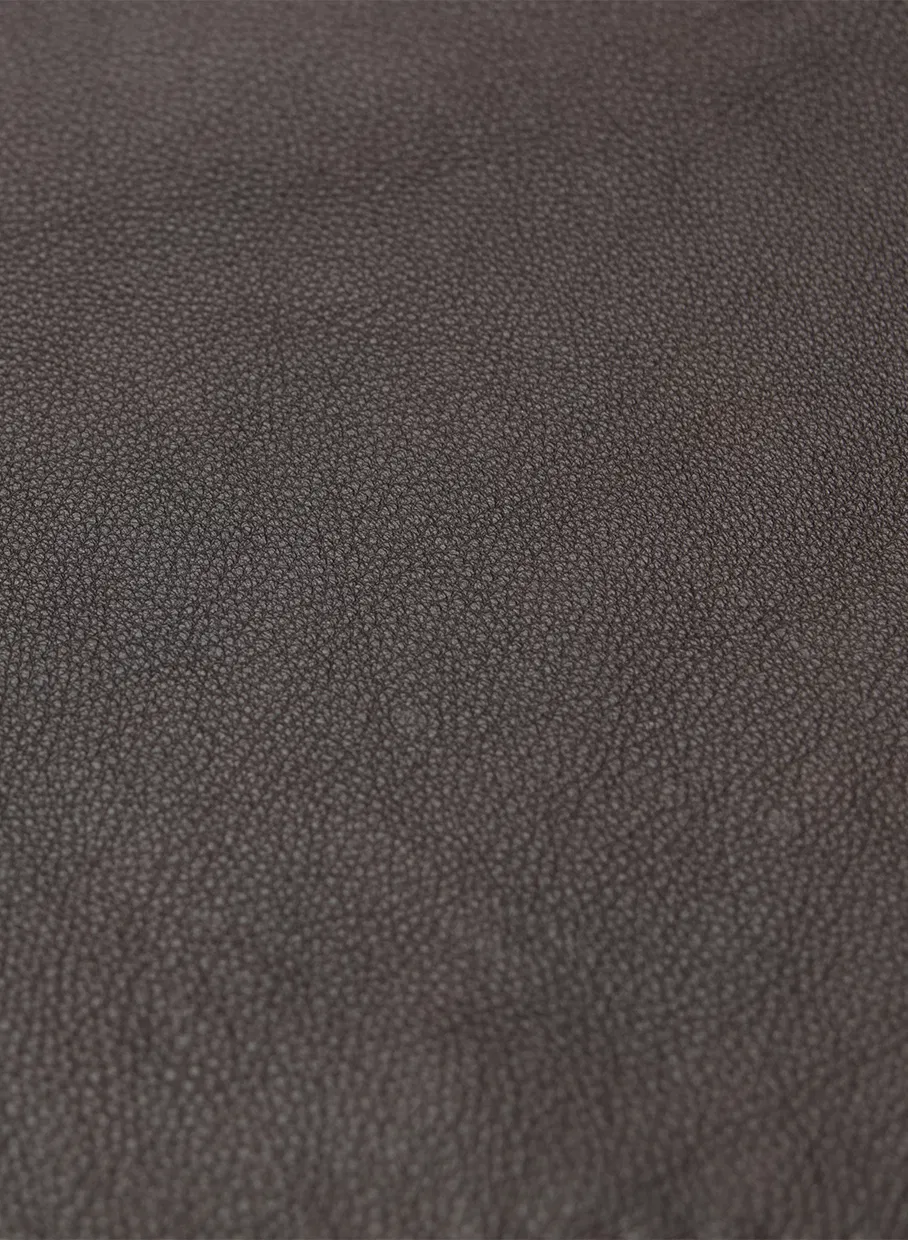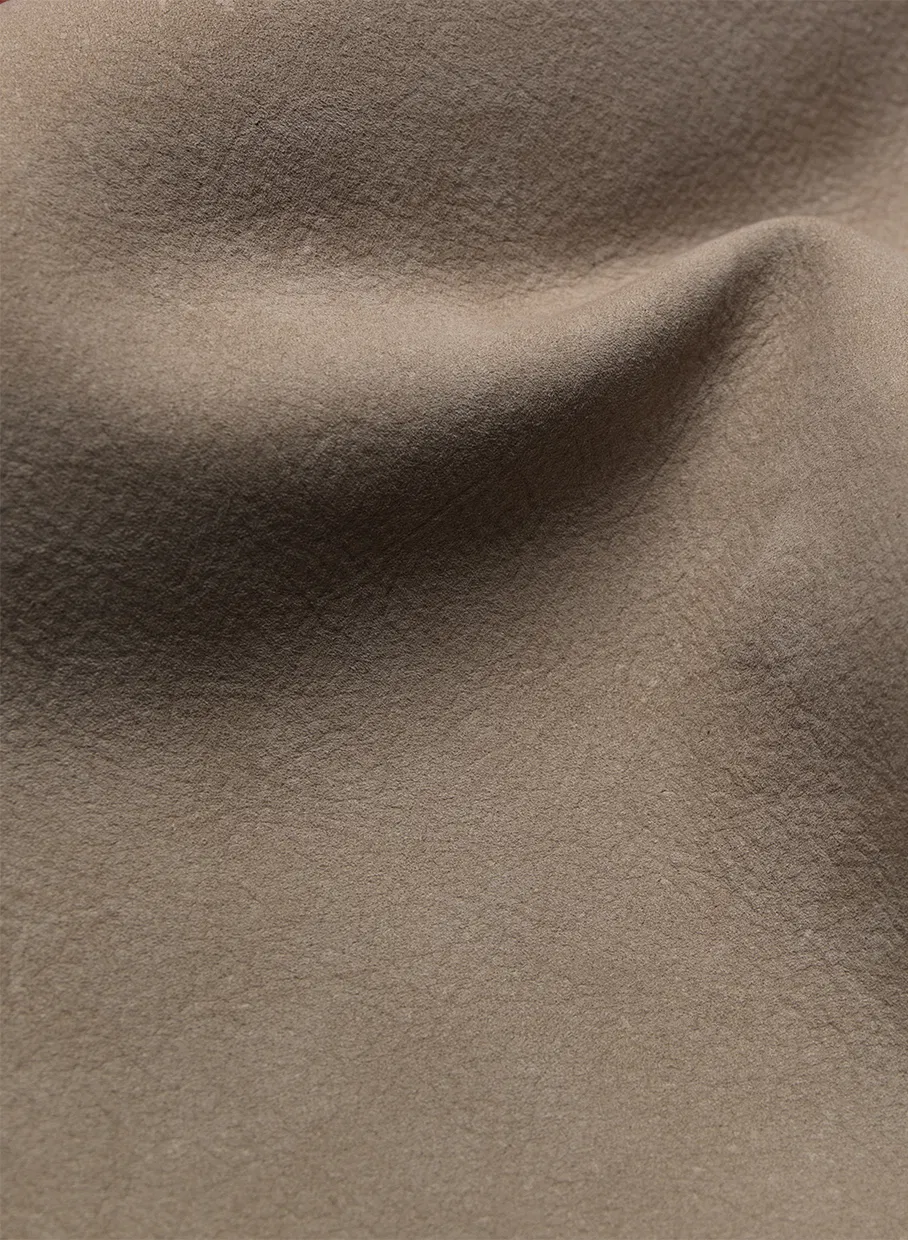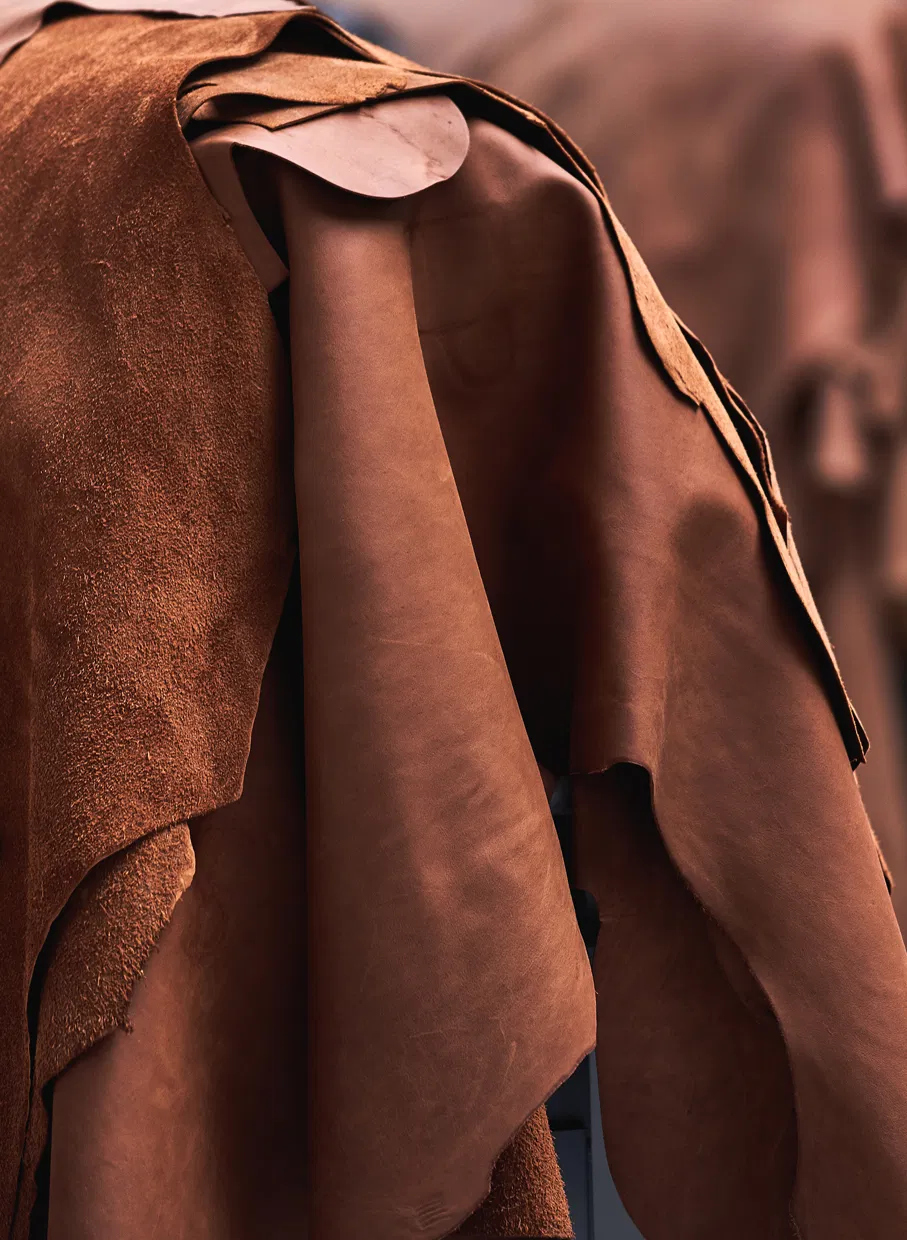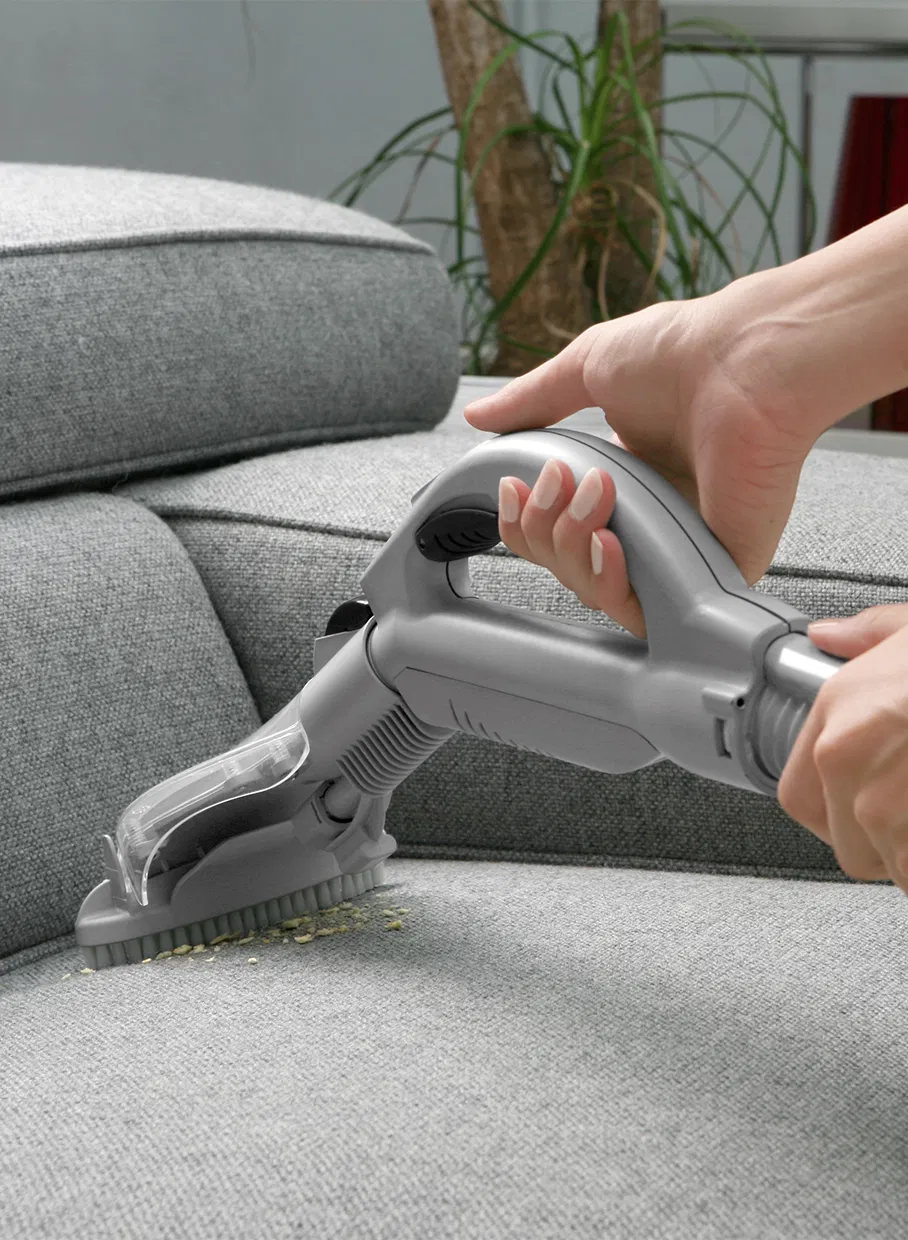Om vårt läder
Våra läder är tillverkade av noggrant utvalda rena naturprodukter som varierar i utseende på ungefär samma sätt som trä och marmor varierar i utseende. Det betyder i sin tur att alla läder är unika vilket bidrar till att berätta materialets historia. Ett läders varianter är inga defekter utan ska ses som ett tecken på att det är ett äkta läder – dess individuella karaktär är det som skiljer det från konstläder.
Alla våra läder följer REACH-förordningen och våra högt ställda kvalitetsstandarder. Vi vill försäkra oss om att varje läder har genomgått en omfattande granskning med avseende på dess minimala miljöpåverkan såväl som dess tillverkning och försäkran om att det inte innehåller några skadliga kemikalier. Våra läder kommer från 6 olika garverier i Europa – främst från Italien.

Anilin
Anilinläder är ett premiumläder. Ren anilin är behandlad med transparenta, lösliga färgämnen som bevarar hudens naturliga yta så att djurets alla porer, ärr och märken förblir synliga. Detta är det mest äkta och lyxiga läder man kan köpa för pengar. Mjuk och smidig vid beröring, den har en rustik, strukturerad look och varje hud är unik, som ett fingeravtryck. Med tiden utvecklar anilinläder den rika patina som läderkännare önskar. Till skillnad från de flesta andra material förbättras detta läder bara med åldern. Som sagt, patina kan vara en fördel eller en nackdel, beroende på vad du är ute efter. Den minimala behandlingen av detta läder gör det mer benäget för fläckar och repor, och det behöver normalt mer vård än andra typer av läder. Endast 5% av allt läder på marknaden nuförtiden är lämpligt för anilinläder. Om du vill att ditt läder ska åldras vackert måste det behandlas med lädervårdsprodukter som är designade för det. Detta bör göras cirka 3 eller 4 gånger per år.
Semi aniline
Semianilinläder är ett anilinläder som är genomfärgat och har behandlats med ett extra skyddsskikt för att öka dess motståndskraft mot fläckar. De naturliga märkena som finns på ett anilinläder kan i vissa fall också hittas på ett semianilinläder. Detta läder är generellt bekvämt och erbjuder bra andningsförmåga. Semianilinläder är mindre kallt på vintern, mindre klibbigt på sommaren och mer motståndskraftigt mot fläckar och repor. Detta gör den mer användarvänlig än äkta anilin och mer lämplig för hushåll med husdjur och barn.

Nubuck
Nubuck är ett lätt slipat, genomfärgat anilinläder med öppna porer. Nubuck är ett levande läder som andas och absorberar fukt, vätskor och naturliga fetter. Utseendet kan variera från hud till hud, med variation i konsistens och färg och märken från till exempel insektsbett, ärr och repor. Dessa varianter är karakteristiska för äkta läder, vilket bevisar att lädret är äkta. Lädret får sin egen karaktär och patina genom användning, vilket gör det vackrare när det åldras. Vår nubuck genomgår behandling för att göra den mer motståndskraftig mot spill och fläckar. Detta varar ca 2 år beroende på användning.
Korrigerat läder
Korrigerat läder är läder tillverkat av skinnets översta lager, där det yttre lagret har slipats bort. Detta görs för att ta bort olika märken som insektsbett, taggtrådsskärningar, repor och andra fläckar. Huden slipas eller poleras innan en skyddande beläggning appliceras och en konstgjord textur präglas in i ytan. Denna typ av läder är den vanligaste över hela huden vad gäller mönster och färg. Den har ett mindre naturligt utseende än anilin eller semianilin, men är mycket resistent mot spill och repor och kräver därför mindre underhåll än andra typer av läder. Den passar till exempelvis soffor för barnfamiljer.
Vad händer på garveriet

Garvning
Denna process, som tar cirka 48 timmar, gör skinnen stabila och lätta att hantera. Hudarna får en gråblå färg.
Sortering
Slutbesiktning av det korniga lädret sker manuellt. Lädret sorteras efter skador på ådring: de finaste hudarna med minst skada förvandlas till anilin eller semianilin. Endast 5 % av hudarna förvandlas till exklusivt anilinläder. Notera att ett semianilinläder endast får kallas semianilin om ådret är orört. Lädret kallas för korrigerat läder om säden mals före färgning. Hudar med många märken slipas och korrigeras och förvandlas till ett standardläder, som har ett präglat mönster och inga öppna porer alls – ett korrigerat läder, men ändå ett narvigt läder.
Genomfärgning
Alla hudar är genomfärgade, vilket ger dem deras slutliga grundfärg.
Torkning
Hudarna sträcks och torkas på olika sätt beroende på vad de ska göras till.
Testning
Testning av slutprodukten är mycket viktigt för att fastställa hållbarhet, flamskydd, ljusäkthet, torrskavning, våtskavning, svettskavning, ytvidhäftning, rivstyrka och tjocklek på lädret. Alla dessa aspekter testas på varje parti färdigt läder. Det tar cirka 4 till 6 veckor att komma från råskinn till färdigt läder.



